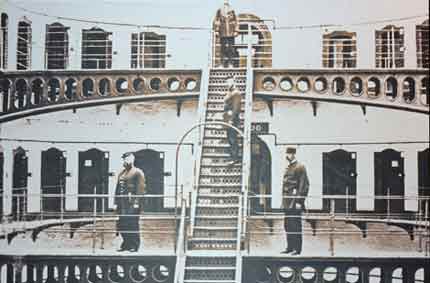The daunting Kilmainham Gaol has been a prominent landmark on the outskirts of Dublin for more than 200 years.
Many key figures in the fight for Irish independence were detained and executed within its grey, imposing walls.
One of the leaders of the 1916 Easter Rising, Joseph Plunkett, was married in the prison chapel just an hour before being taken out and shot by a firing squad. The chapel is still there, and Plunkett’s name is still displayed above the cell he occupied.
It was an active jail between 1796 and 1924.
Youngest inmate was just seven years old
The conditions were extremely harsh with up to five inmates per cell. They would only have a candle for heat and light. They had to use it sparingly as they were only given one candle a fortnight.

Male prisoners had to sleep on iron bedsteads, but it was even worse for the female inmates who were only given beds of straw. Children were also sent to prison for minor offences such as stealing food; the youngest was reportedly just seven years old.
Many prisoners were sent to Australia at the end of their sentence and up until the 1820s, public hangings used to take place at the front of the jail.
Easter Rising leaders executed
In 1916, Padraig Pearse and Thomas Clarke, who were leaders of the Easter Rising, were executed at Kilmainham.
The jail was closed in 1924 by the new government when after centuries of struggle, Ireland became a free state. The jail was renovated and turned into a museum covering the history of Irish nationalism.
Visitors can take a tour of the building and see the cells and conditions that the inmates had to endure, including the Stonebreakers’ yard where the Easter Rising leaders were shot.
The museum also includes an art gallery featuring paintings, sculptures and jewellery made by prisoners all over modern Ireland.
Guided tours include an audio visual show. The guides give a detailed talk on the political and penal history of the prison.
holidays.html
